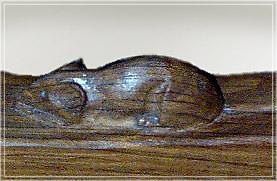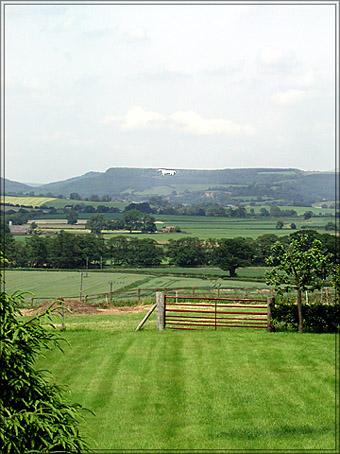Yorksview
Kilburn
|
Kilburn lies south of Sutton Bank on the A170 in the North Riding. It isn’t far from the attractive market town of Helmsley and is near Thirsk where the real James Herriot practised as a vet. Kilburn has two claims to fame – a horse and a mouse. Creatures great and small. The White Horse at Uffington
is cut into the chalk of White Horse Hill on the Berkshire Downs and
is 374 feet long. It is believed to date originally from the Iron Age
though it is also associated with the Romans and with Alfred the
Great. It was after visiting the Uffington White Horse that Thomas
Taylor decided that Yorkshire should have one too. So in 1857 he
arranged for a white horse to be cut into Roulston Scar in the
Hambleton Hills at Kilburn. Taylor was a successful master grocer who
had been born locally even though his business was in London. Thirty men were involved in the project. Six tons of lime were needed to whitewash the horse because the hillside is not built of chalk like that at Uffington. The Kilburn White Horse is 314 feet long and 228 feet high. It can be seen clearly from the A1 and A19 from miles and miles away. A hailstorm nearly destroyed it in 1896.
|
The White Horse of Kilburn |
Kilburn is also famous as the home of
Robert Thompson, a fine carpenter and woodworker who became known all over the
world. His early work was for Ampleforth College; today examples of his
craftsmanship can be found throughout Yorkshire – at Beverley Minster and
Ripon Cathedral, for example – and beyond.
His trademark is a small hand-carved mouse which will be found unobtrusively on chair legs, bench ends, bed heads, the corner of a door. He used this as his emblem because when he got his first commission at Hubberholme Church in Wharfedale he was as poor as a church mouse. The mouse signifies ‘industry in quiet places’.

Robert 'Mousey'
Thompson's trademark
Thompson trained local boys as
apprentices and they and their successors continue his work. The medieval
chapel of St Thomas in St Mary’s Church, Kilburn, was refurbished in 1958 as
a memorial to him. His nickname, The Mouseman, is known to many who would have
no knowledge of his given name.
So, there is nothing ancient about Yorkshire’s White Horse. Really it is a folly, a Victorian extravagance but one of those which adds to the variety and fun of our landscape. And next time you are in Westminster Abbey look carefully at those wooden candlesticks. You’ll find a small carved mouse in the corner.
jdb
